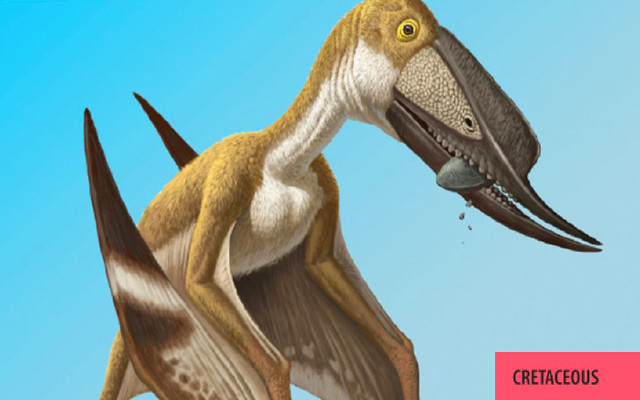Dsungaripterus was a genus of pterosaur, with an average wingspan of 3 metres (9.8 ft).[1] It lived during the Early Cretaceous, in China, where the first fossil was found in the Junggar Basin.
Dsungaripterus weii had a wing span of 3 to 3.5 metres (9.8-11.5 ft). Its skull, forty to fifty centimetres long, bore a low bone crest that ran down from the base of the skull to halfway to the beak. Dsungaripterus’s head and neck were together almost a meter long. Its most notable feature are its long, narrow, upcurved jaws with a pointed tip, making the animal look like a pair of flying tweezers. It had no teeth in the front part of its jaws, which were probably used to remove shellfish and worms from cracks in rocks or/and the sandy, muddy beaches it inhabited. It had knobbly flat teeth more to the back of the jaw that were well suited for crushing the armor of shellfish.[1]
(From Wikipedia, February 2015)




